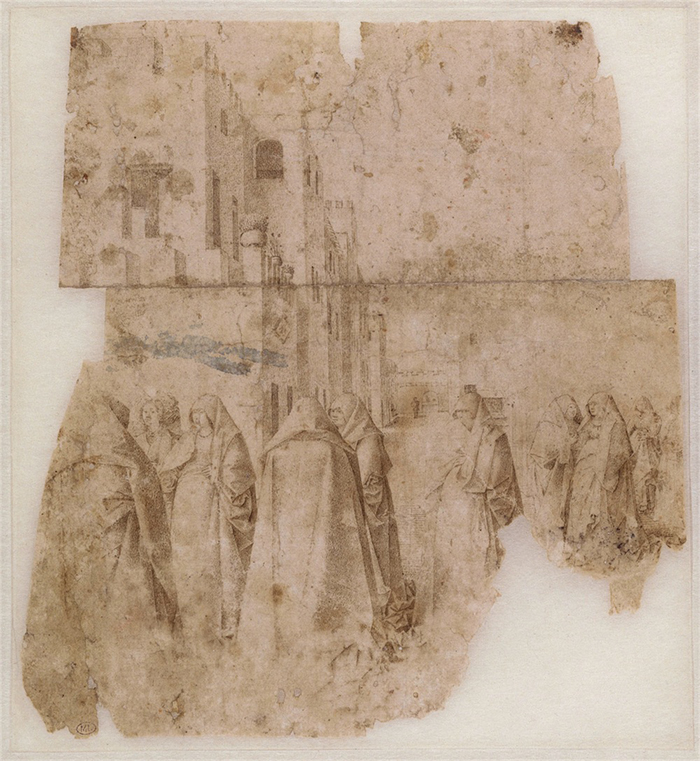 |
| Antonello da Messina, Group of figures in a square, department of Prints and Drawings, Musée du Louvre, Paris |
|
Very few drawings can be attributed to Antonello with any certainty. Following Robert Lehmans acquisition of this sheet in the 1920s, it was generally considered a work by the Netherlandish artist Petrus Christus, or by a sculptor in the orbit of Claus Sluter because of the resemblance of its heavily draped figures to the famous pleurants (or mourners) on the latter's tomb sculptures in Dijon. The alternative attribution to Antonello da Messina was made independently by Julius Held (letter of 1938) and Roberto Longhi (1953). |
| [1] Andrea Bayer in Antonello da Messina: Sicily's Renaissance Master [Gioacchino Barbera, Keith Christiansen, Andrea Bayer], The Metropolitan Museum of Art / Yale University, (2005) ISBN 10: 1588391779 ISBN 13: 9781588391773 |
||||
|
||||
|
Image source: Musée du Louvre
|
||||
Hidden secrets in Tuscany | Holiday home Podere Santa Pia |
||||
Montefalco |
Podere Santa Pia, giardino |
Podere Santa Pia
|
||
 |
||||
One of the best places to slow travel in southern Tuscany is Podere Santa Pia. This holiday house is a peaceful retreat, perfect for relaxing with magnificent panoramic views of the mystical Maremma hills up to the Mediterranean Sea and Montecristo.
|
||||



